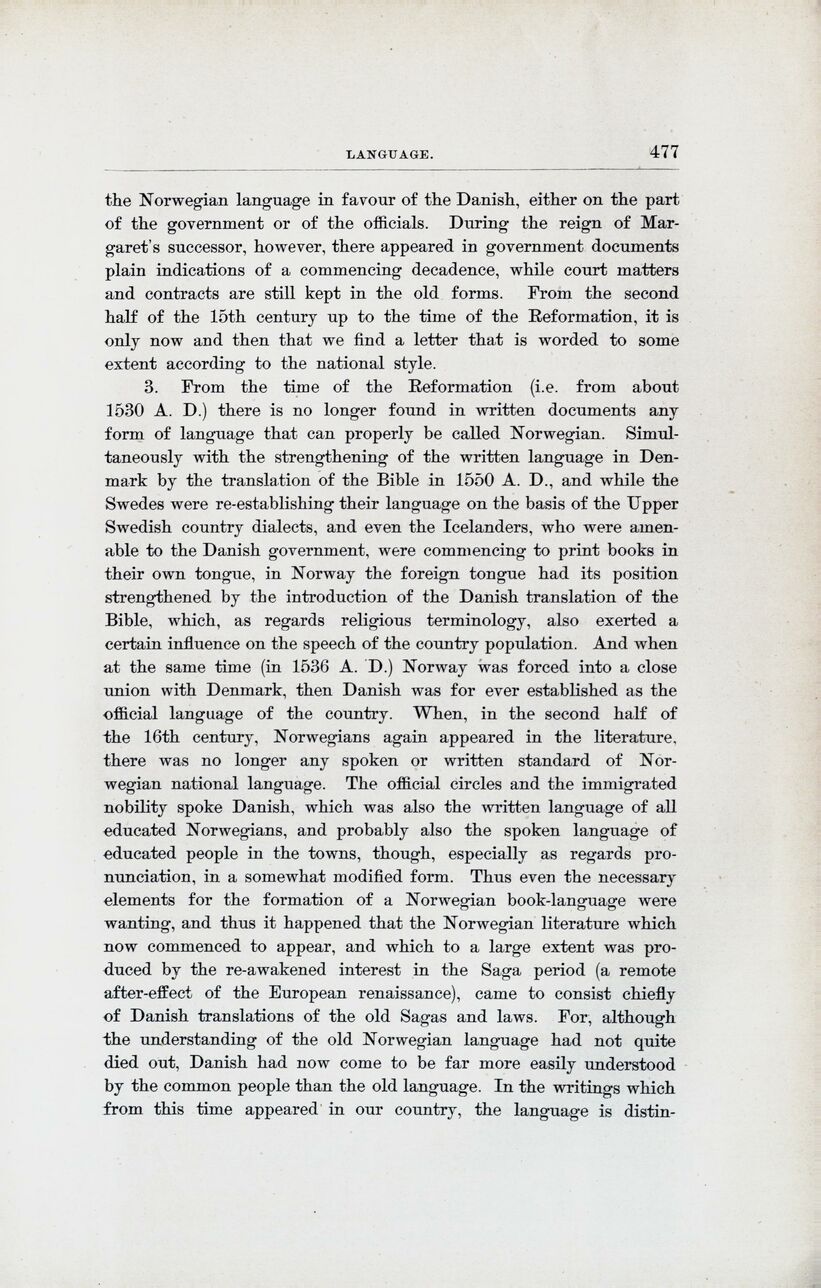
Full resolution (JPEG) - On this page / på denna sida - Language, by Hj. Falk

<< prev. page << föreg. sida << >> nästa sida >> next page >>
Below is the raw OCR text
from the above scanned image.
Do you see an error? Proofread the page now!
Här nedan syns maskintolkade texten från faksimilbilden ovan.
Ser du något fel? Korrekturläs sidan nu!
This page has been proofread at least once.
(diff)
(history)
Denna sida har korrekturlästs minst en gång.
(skillnad)
(historik)
the Norwegian language in favour of the Danish, either on the part
of the government or of the officials. During the reign of
Margaret’s successor, however, there appeared in government documents
plain indications of a commencing decadence, while court matters
and contracts are still kept in the old forms. From the second
half of the 15th century up to the time of the Reformation, it is
only now and then that we find a letter that is worded to some
extent according to the national style.
3. From the time of the Reformation (i.e. from about
1530 A. D.) there is no longer found in written documents any
form of language that can properly be called Norwegian.
Simultaneously with the strengthening of the written language in
Denmark by the translation of the Bible in 1550 A. D., and while the
Swedes were re-establishing their language on the basis of the Upper
Swedish country dialects, and even the Icelanders, who were
amenable to the Danish government, were commencing to print books in
their own tongue, in Norway the foreign tongue had its position
strengthened by the introduction of the Danish translation of the
Bible, which, as regards religious terminology, also exerted a
certain influence on the speech of the country population. And when
at the same time (in 1536 A. D.) Norway was forced into a close
union with Denmark, then Danish was for ever established as the
official language of the country. When, in the second half of
the 16th century, Norwegians again appeared in the literature,
there was no longer any spoken or written standard of
Norwegian national language. The official circles and the immigrated
nobility spoke Danish, which was also the written language of all
educated Norwegians, and probably also the spoken language of
educated people in the towns, though, especially as regards
pronunciation, in a somewhat modified form. Thus even the necessary
elements for the formation of a Norwegian book-language were
wanting, and thus it happened that the Norwegian literature which
now commenced to appear, and which to a large extent was
produced by the re-awakened interest in the Saga period (a remote
after-effect of the European renaissance), came to consist chiefly
of Danish translations of the old Sagas and laws. For, although
the understanding of the old Norwegian language had not quite
died out, Danish had now come to be far more easily understood
by the common people than the old language. In the writings which
from this time appeared in our country, the language is
<< prev. page << föreg. sida << >> nästa sida >> next page >>